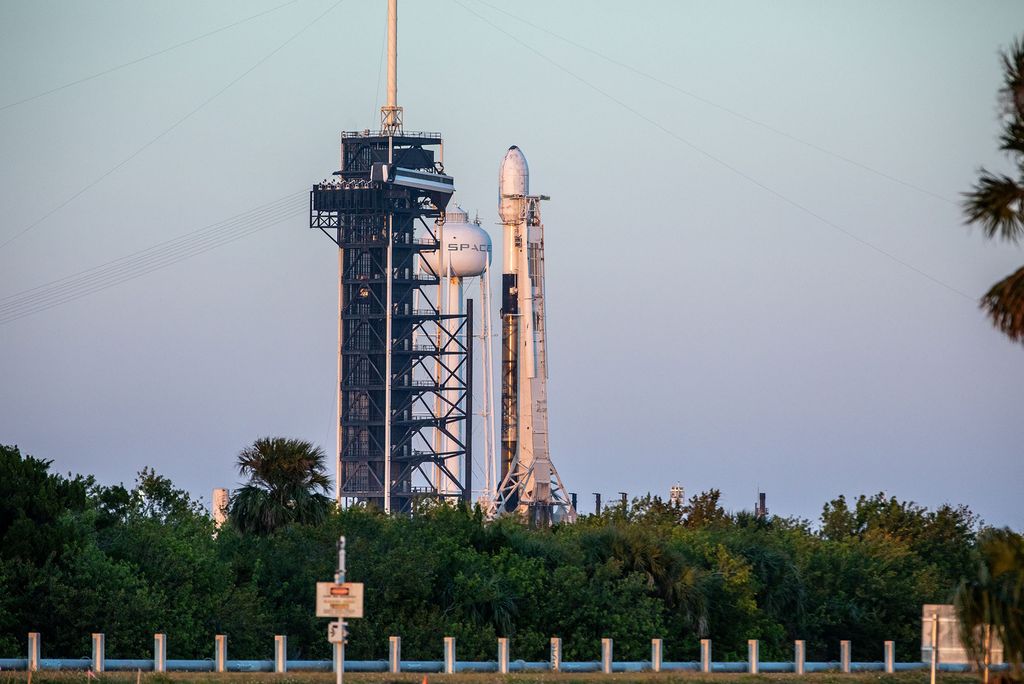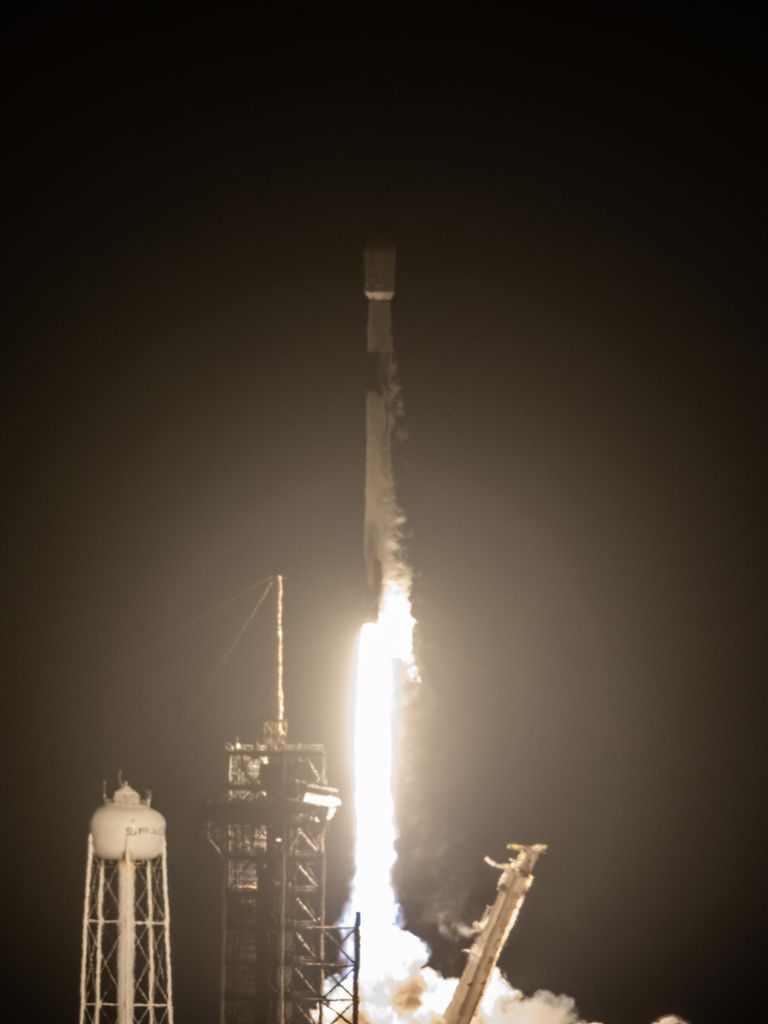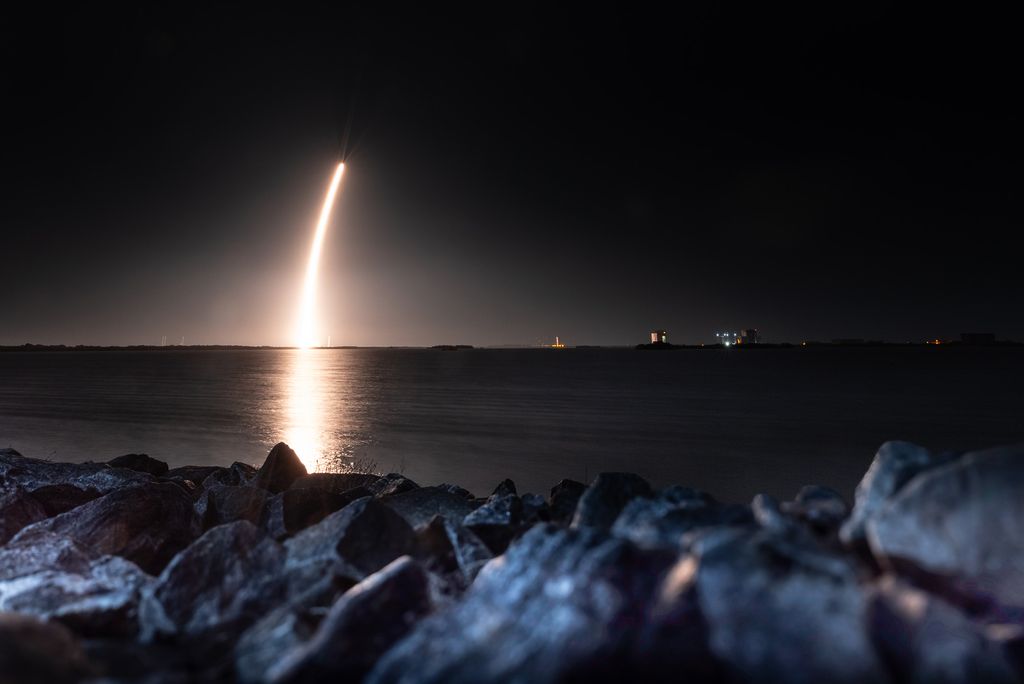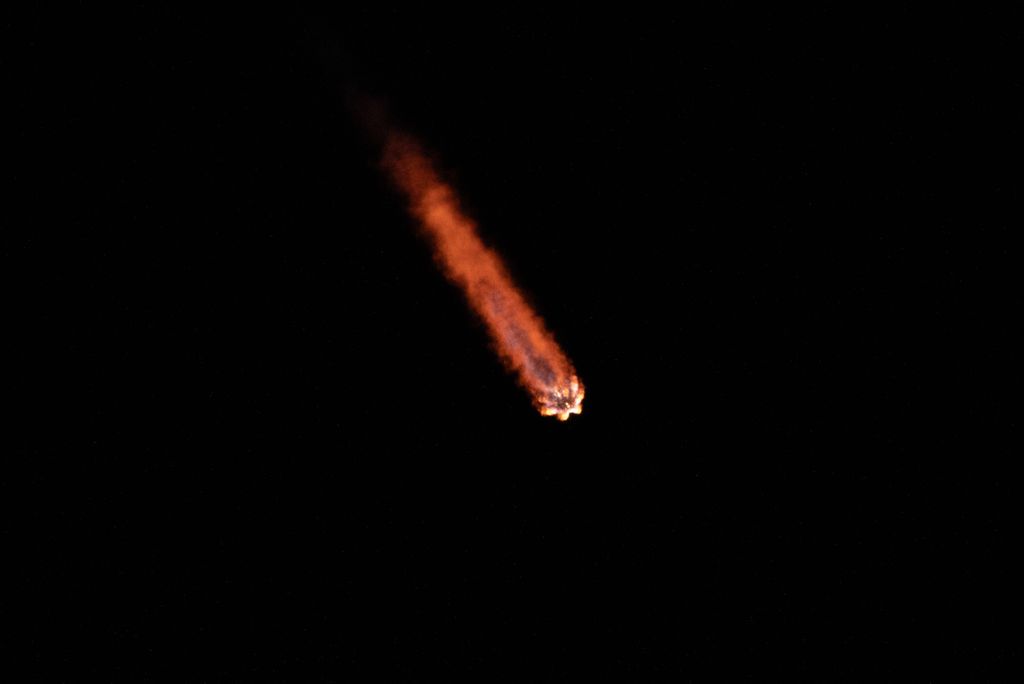We Have Liftoff: BU Telescope Heads for the Moon
Watch launch footage and reactions as NASA’s Blue Ghost moon lander, carrying a BU-created X-ray telescope, blasts off into space
We Have Liftoff: BU Telescope Heads for the Moon
We Have Liftoff: BU Telescope Heads for the Moon
At 1:11 am on January 15, NASA’s Blue Ghost Mission 1 spacecraft blasted into the sky from the Kennedy Space Center in Florida, riding on a SpaceX Falcon 9 rocket and destined for the moon. On board: a telescope designed and built at Boston University. Among those watching the launch from just miles away—close enough to see the glowing tail of the engine—were BU engineer Brian Walsh and four of his teammates.
It’s a moment they’ve anticipated for over five years. Their telescope, Lunar Environment heliospheric X-ray Imager (LEXI), will image the boundary of Earth’s magnetic field for the first time.
About an hour and five minutes after blast off, Blue Ghost—the lunar lander designed by private company Firefly Aerospace and commissioned by NASA—separated from the Falcon 9 rocket, all perfectly to plan.
“There are many mountains to climb on the way to the moon, and this was one of the big hills to get over,” says Walsh, a BU College of Engineering associate professor of mechanical engineering. “There is so much excitement, and anticipation for all the work still to come. It’s a true team effort to pull something like this off.”
The lander, shining golden against the backdrop of Earth, will now orbit our planet for about 25 days. Then, it will jet over to the moon, stay in orbit around the moon for another 16 days, and then touch down on the near side, in a flat region called Mare Crisium. Blue Ghost is equipped with 10 payloads, including LEXI, that will operate on the moon for 14 days. LEXI will be the first BU-created device to ever land on another planetary body.

Photo by Kim Shiflett/NASA

Photo by SpaceX

Photo by Kim Shiflett/NASA

Photo Courtesy of NASA/Cory S Huston

Photo by Kim Shiflett/NASA
Brian Walsh and four of the LEXI team members viewed the rocket launch from a public viewing area 8 miles from the Kennedy Space Center. According to NASA’s live stream, the launch and separation of Blue Ghost from the rocket unfolded as expected.
“I am incredibly lucky to be part of a team like this, and be involved in something that is at the forefront of scientific technology and discovery,” says Ramiz A. Qudsi, a BU Center for Space Physics research scientist and lead data scientist and software developer for LEXI. He was in Florida to witness the launch, and will be part of the team sending commands to LEXI when it’s in transit and on the moon.
Blue Ghost marks NASA’s third attempt to ship payloads to the moon with a private company, a mission ignited by the agency’s efforts to conduct research in different lunar regions—and eventually build a base for travel to Mars. It’s one of eight US landers anticipated to take off in the next two years. Walsh and his team at BU received funding from NASA in 2019 to design and build the telescope. Seeing it blast off into space was a moment of exhilaration.
“It has been a fascinating experience being part of this project and being a part of a larger mission,” says Catriana Paw U (ENG’23,’24), a research PhD student in BU’s Center for Space Physics who has been working on LEXI since 2019. Paw U watched the rocket launch with the team in Florida. “After so much time designing, building, and testing on Earth, I am holding my breath in anticipation of all of the steps that must go right for LEXI to successfully get to, and operate on, the moon. Getting that first wide field-of-view image will be an incredible and inspiring moment for all of us who worked on the project.”
One of the first pictures of Blue Ghost from space shows LEXI pointing up. Walsh says that the team will operate the telescope every 24 hours for two hours at a time between now and landing.
Once LEXI opens its protective dust cover—mounted on top of the lander—it will get an unprecedented view of Earth’s magnetosphere, the magnetic bubble that shields us from harmful charged particle radiation. From a mission control room at BU, the team will send a command to LEXI to trigger a latch on the front of the telescope, opening a small door that will expose LEXI’s specially developed lenses to the expanse of space. The data they receive will illuminate the electromagnetic relationship between Earth and the sun that has allowed life on Earth to exist.
“When we get data from LEXI, we need to analyze that data in almost real time to ensure that LEXI is healthy and it is recording data at the rate we expect it to,” says Qudsi. He developed the software that will read the LEXI data and display the results in a set of graphs.
It will be another 45 days until the Blue Ghost touches down. In the coming weeks, The Brink will continue to follow LEXI on its journey through space, all the way to the landing of the Blue Ghost and interpretation of the data it sends back. Follow BU on social media and check back on The Brink for more exciting updates. To learn more about the years of work that went into creating LEXI and the science it will perform on the moon, and to watch videos of the telescope coming together, check out our mission countdown.
This research was supported by NASA.



Comments & Discussion
Boston University moderates comments to facilitate an informed, substantive, civil conversation. Abusive, profane, self-promotional, misleading, incoherent or off-topic comments will be rejected. Moderators are staffed during regular business hours (EST) and can only accept comments written in English. Statistics or facts must include a citation or a link to the citation.